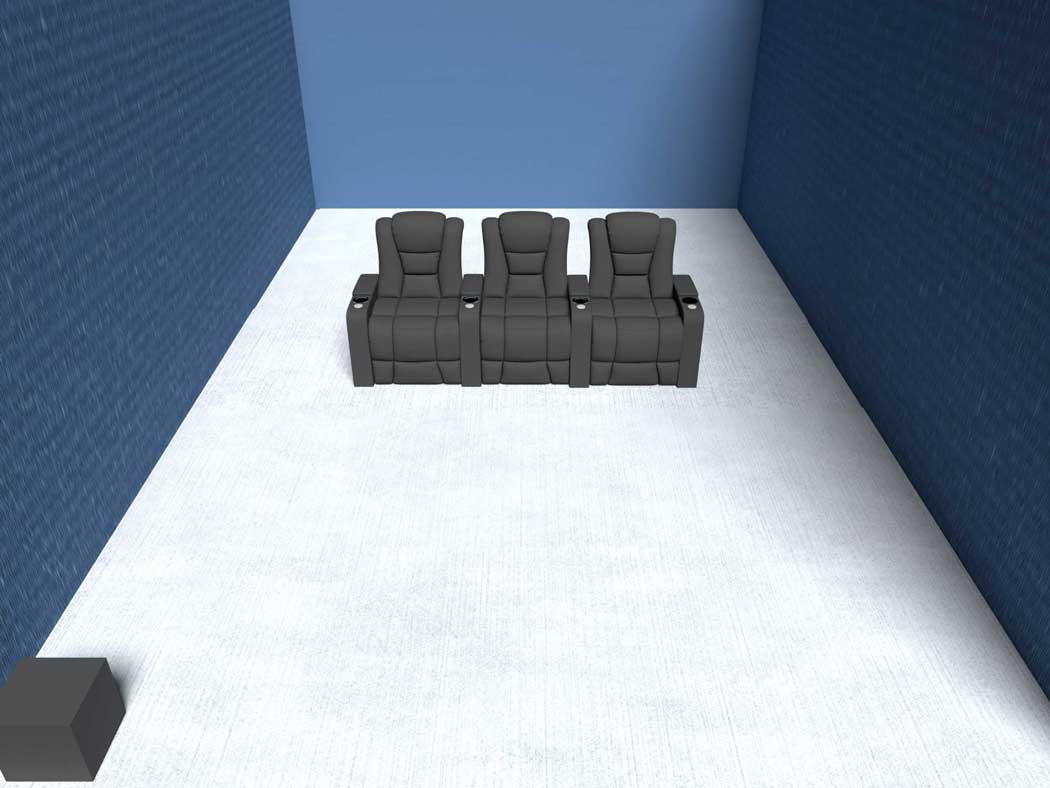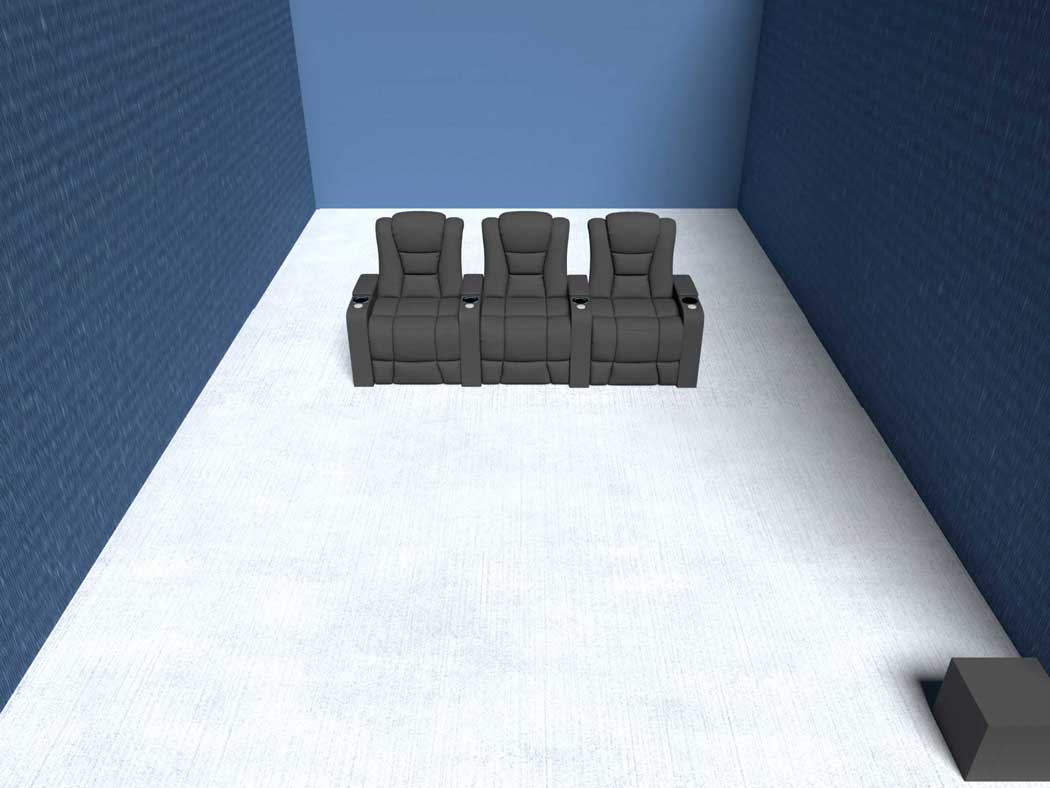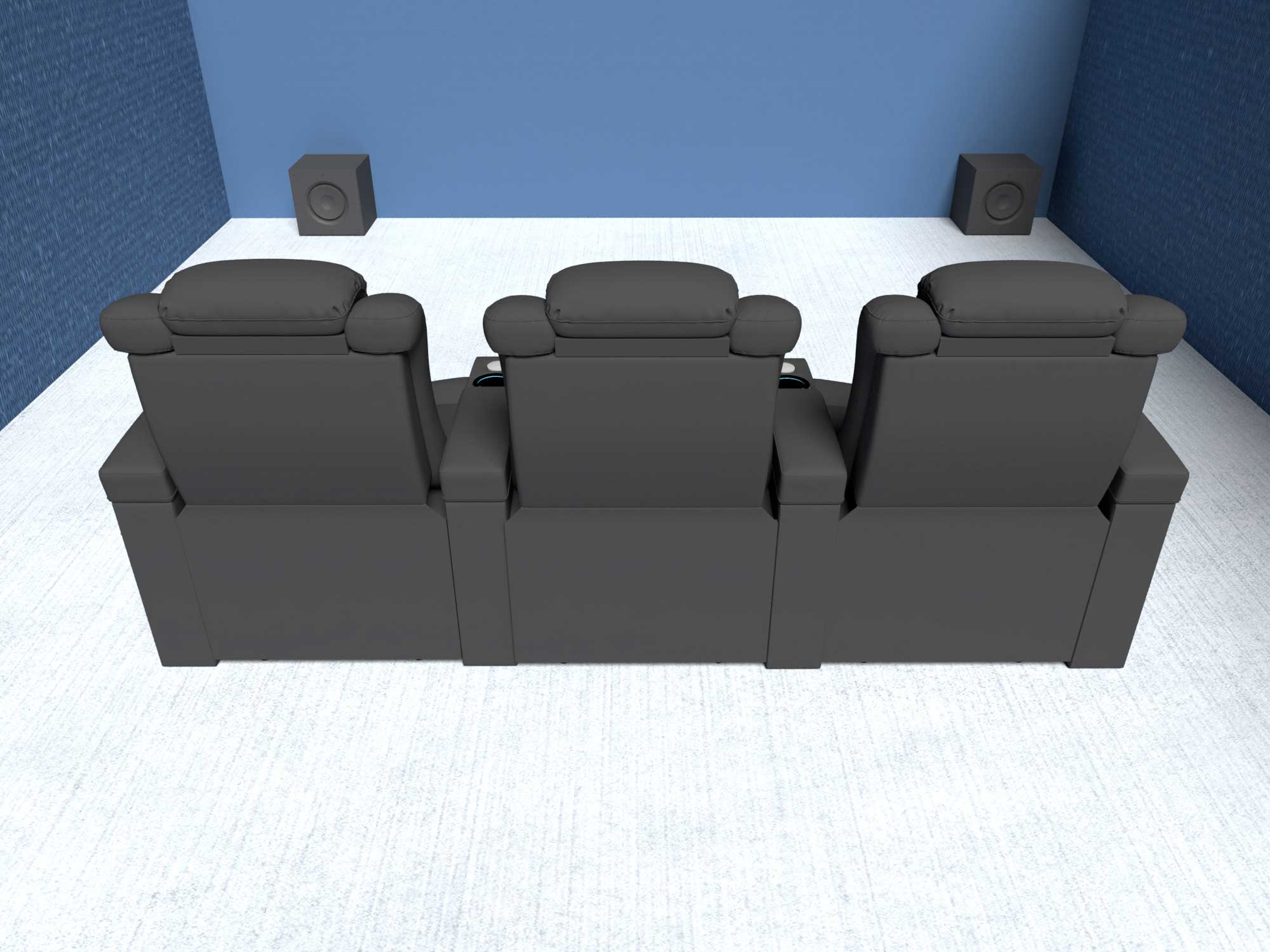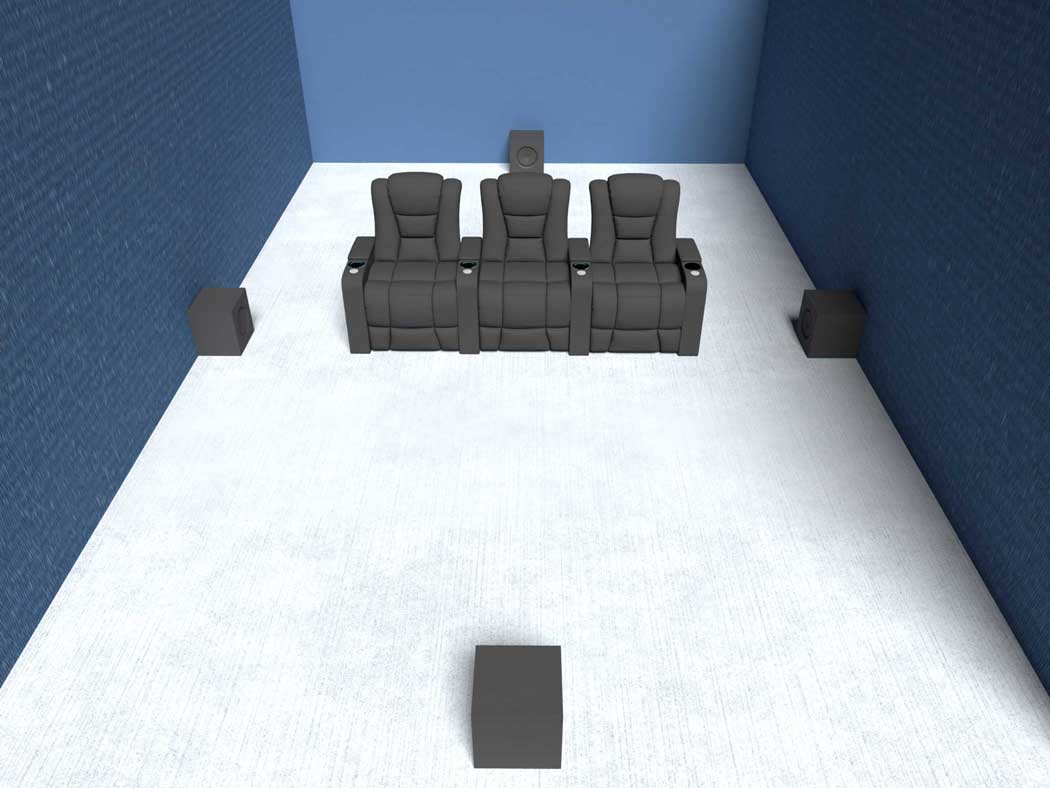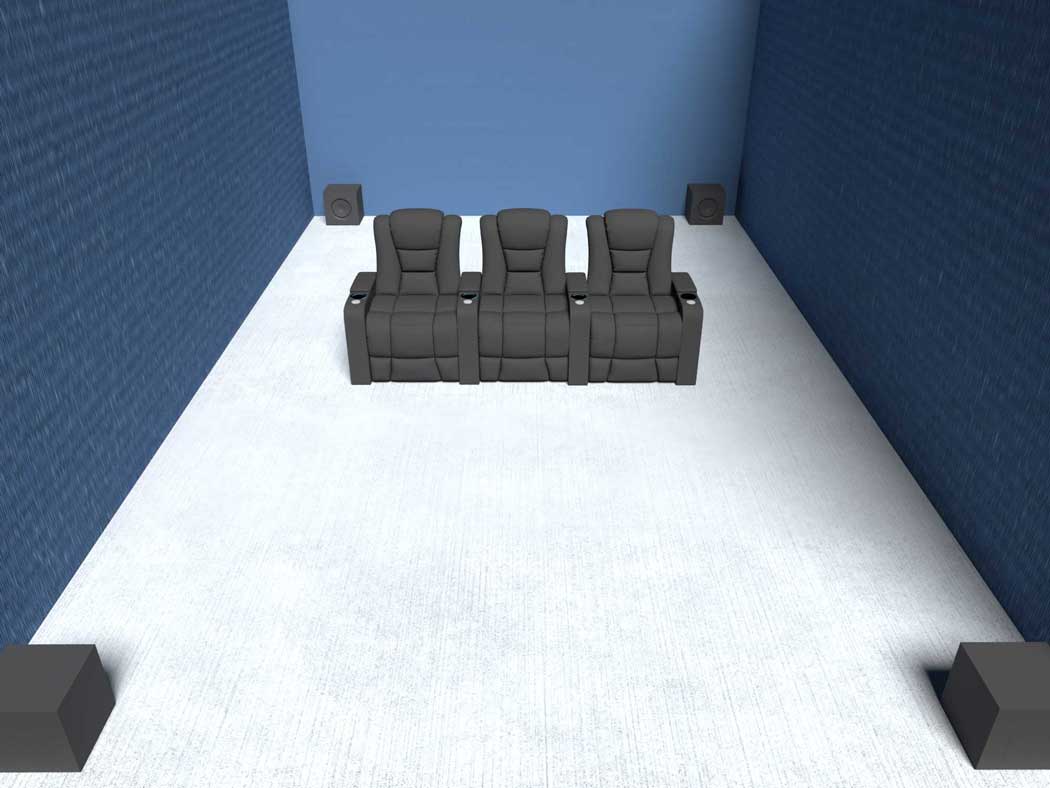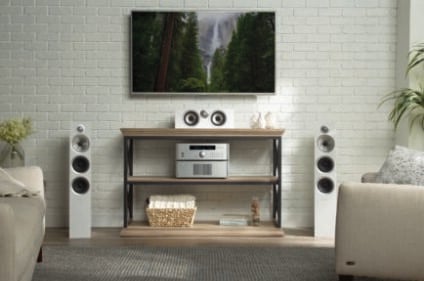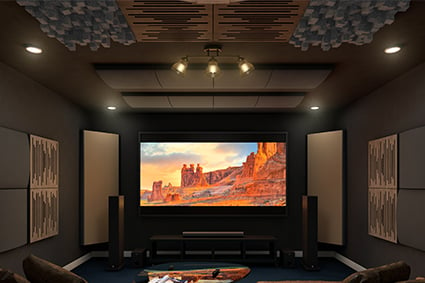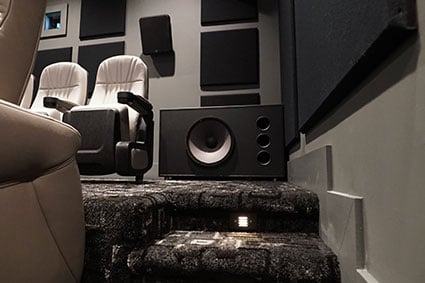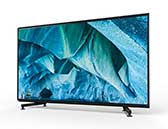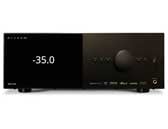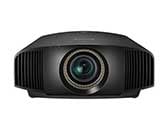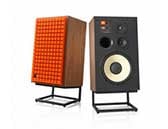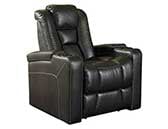How Bass Tones Interact With Your Room
Getting accurate, good bass for all of the seats in your home theater and not just one sweet spot is more of a challenge than you might think at first. All speakers interact with your room and nothing interacts more than the lower frequencies.
If you want to understand just how much your room alters the sound, put on a song with a deep bass track, then walk around your room, listening when you are against the wall, in the middle of the room, and in different spots. It’s highly likely you’ll notice that some frequencies are very loud in some locations and almost completely missing in others.
When sound comes out of a speaker, some of it arrives at your listening position directly from the speaker, but a lot more bounce around the room first before you hear it. This is especially true for lower frequencies as they do not get absorbed by furniture or carpet.
In simple terms, as the bass frequencies bounce around, the dimensions of your room cause some frequencies to increase in volume and others to decrease. To make matters worse, this varies depending on the distance you are from each wall.
If you think about this, there are actually two factors affecting bass. The placement of your subwoofer and where you sit. Sometimes you do not have a choice, but if you do, the best spot to have your main seats is roughly ⅔ of the distance your room is long from the front wall. The worst spot for intersections of dips and peaks would be in the exact center of your room. Sitting right against the back wall will cause you to hear more peaks which will make your bass boomier. For those of you who can control your seating position, this should be your first step.
If you are building a new theater or updating your current one, if you use our free Home Theater Design Tool, it will actually tell you where all of your front, side, rear, and atmos speakers should go depending on your room dimensions and setup. However, nailing down the placement of your subs takes a little more work. Let’s start by talking about the simplest way to improve the bass performance in your room.
If you are noticing some bass tones are a lot louder than others, you can try moving your subwoofer around a little bit as this will change how it interacts with your room. You might be surprised at the difference less than a foot or two can make!
Room Correction for Subwoofers
Another option that has emerged with new technology is subwoofers with built-in room correction. These subs generally come with a microphone and software that analyzes the frequency response at your listening position and they will then automatically improve the performance. So if you already have a full theater setup and want to improve your bass, upgrading to a better subwoofer with good room correction is a nice option and can make your system sound smoother. The catch is, while software can cut back a big bass peak, it's virtually impossible for the system to increase a big bass dip generated by a subwoofer in a given room. The impact of the room just can’t be overcome by throwing more and more power at one or two frequencies without hurting the performance of the other frequencies or damaging your subwoofer.
The Advantages of More Than One Subwoofer
So for those of you seeking out the best possible experience, the real solution from a physics standpoint is to have more than one sub in your room. Since the bass dips and peaks are caused by how the subwoofer reacts with the room, if you put another subwoofer, in a different spot in your room the two will provide different peaks and valleys across different seating positions, thereby evening out the frequency response across more of the seating positions.
The more subwoofers you place into a room, the better the final result is. Not only will you reduce the number of dips and peaks, but you will also get more effortless bass sound as each subwoofer does not have to work as hard to get to the correct volume level when their sounds are combined.
Subwoofer Placement Considerations
Now let’s look at our primary suggestions on subwoofer placement for the most common situations. Bear in mind that every room is different so you will want to start with these suggestions and concepts and likely make slight adjustments based on your individual situation. This article focuses more on subwoofer placement — we also have a full in-depth article on how to calibrate your subwoofer. We like to think about subwoofer placement using the three Ps on determining where your subs go. First, you find the best place for Performance, then you decide if the location is Practical given your room, and finally is it Pretty. In other words, try to find the best place acoustically that also works well and looks decent in the room.
Single Subwoofer
For a single subwoofer, we recommend you put it on the front wall and if possible put the subwoofer towards one of the front corners. Having the subwoofer in a corner will couple the subwoofer better to the room, giving you more bass impact. You will then use the calibration software on your subwoofer and/or home theater receiver to even out the bass response. So the concept with one subwoofer is that we are trying to add maximum bass energy into the room and use software to cut off the peaks that are too high.
If you can, try placing your sub just a few inches out from the corner so it’s not totally up against the wall. Lower performance subs may have to be closer to the corner to get you the bass impact you want but will also naturally cause bigger peaks and dips. So if you go with one sub, try to get the highest performance one you can with good calibration capability if you don’t have sub calibration on your receiver. If your receiver has a good calibration system like Dirac or Anthem Room Correction then focus on getting the best subwoofer you can and getting it into the right place in the room.
As long as you have the sub in the front with your main speakers, it does not really matter which corner you choose if your room is a rectangle, either side should work.
For those of you willing to experiment further, there are two other methods we like to use to find the best spot for a single subwoofer. The first is known as the “subwoofer crawl”. Now we have to warn you, this is a bit of work, but very effective. You will need to put your subwoofer in the same spot as your main listening chair as close to normal ear height as possible. You then put on some music with deep bass or use deep bass test tones. Crawl around the perimeter of your room with your head about the height your sub would normally be off the floor and find the spot that has the fullest, most accurate, and balanced-sounding bass. From a physics standpoint, you are simply reversing the position of the sub and the listener because it's easier for you to move around the room than to move the subwoofer around.
You may find the best spot is not practical or pretty or you may not like the idea of the crawl. Another way is to put the subwoofer in the general location where you think it will fit best in your room then just do a little listening.
Find a musical track with some deep bass that also moves up and down in frequency. Sit and listen to a bit of the track, then try moving the subwoofer out of the corner but still along the front wall and play that same track over. Move your subwoofer in one-foot increments and listen each time. Then go back to the corner position and try moving your sub down the sidewall in 3 different positions each about a foot apart. In one of these positions, you will probably notice the bass sounds more full and better blended with your main speakers.
Once you have this spot, if you want to fine-tune further, you can try moving the sub into the room a foot or so and see if that changes anything.
You might have to make a trade-off on sound versus how the subwoofer looks in your environment. For many rooms, in or near the corner will wind up looking the best and sounding good as well, especially with just one subwoofer as it will excite the most bass in the room.
If you have a receiver or processor with room correction such as Dirac or Anthem, these steps are a little less critical as those two do an amazing job of smoothing out bass issues, but if you want the ultimate in performance, these listening steps are still worthwhile doing.

